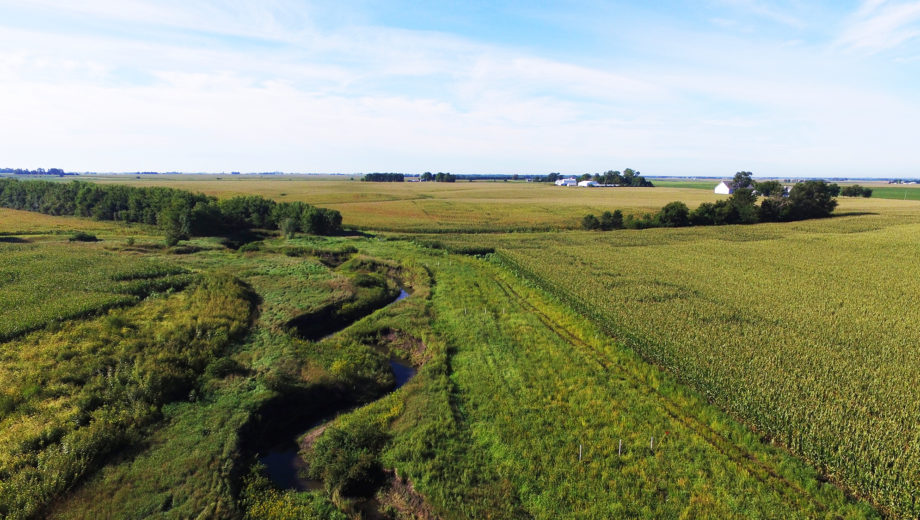
Financing Nature: Unlocking Solutions for Regenerative Agriculture
As part of Climate Week NYC, HSBC hosted a series of virtual events to help businesses navigate net zero, accelerate climate action, and assess progress ahead of COP26. One of the sessions, Financing Nature: Unlocking Solutions for Regenerative Agriculture, featured Christine Daugherty, VP of Global Sustainable Agriculture & Responsible Sourcing at PepsiCo.
She, alongside other experts, discussed nature-based solutions in practice and how they are accelerating development of new models and options for regenerative agriculture. The session was moderated by JP Leous, Director of International Corporate Relations, World Resources Institute and also included Gerry F. Keefe, Head of Global Banking, Americas and Pierre Roux, Senior Investment Manager at Climate Asset Management.
View the hour-long session here and read on for our three takeaways.
Regenerative practices need help to become the norm
Regenerative farming is not a prescriptive way to farm, it’s a holistic approach that produces positive outcomes on a farm. The right practices can help to restore natural ecosystems by rebuilding organic matter, restoring biodiversity and sequestering carbon below the soil surface, which reduces overall CO2 emissions and increases water holding capacity. But to get these outcomes at scale we need to change the way that farmers and supply chain partners approach agriculture.
Through PepsiCo’s work with the Midwest Row Crop Collaborative (MRCC), they have identified three key elements needed to make change happen: expanding farmer access to on the ground technical assistance, addressing the cultural barriers that limit practice adoption, and evolving the role of finance to support farmers in their transition to new growing methods.
While regenerative agriculture can be more profitable than more traditional approaches to farming, it can take a few years to access that improved value. As a farmer makes the transition and adopts new practices, they can expect some higher up-front costs, so providing financial incentives and access to markets for sustainably produced crops can lower the risk and the cost of switching practices.
The financial sector can help propel shifts in practices
Banks like HSBC can play a key role in scaling regenerative agriculture in several ways. First, banks can provide direct financing for sustainability focused innovations. HSBC has a vendor lending platform for this purpose which directs resources to startups innovating in the field.
Banks can also help to close financial gaps. Gerry Keefe described it this way, “There is always some gap between what one side of the trade wants and what the other side of the trade is going to deliver. Asset managers struggle with this gap the most.”
Leverage is often a part of fixing return and risk expectations on both sides. It can come from banks, or partners like the International Finance Corporation, or the markets directly. Risk appetite can also be dealt with through structure. As an example, organic transition loans to farmers might be risky as a one-off, but if they are bundled and pooled, you can diversify the risk.
Daugherty also noted, “Farmers are businesspeople. Let’s not forget that. They’re at the center. If we want regenerative agriculture to scale it needs to be an attractive business proposition—that’s where finance comes in. We need more sophisticated financial incentives that move beyond cost share for farmers to adopt sustainable practices. Cost share has a limit to how far it can scale. Innovative financing will take us from pilots to landscape level shifts in practice.”
Partnerships are essential to support farmers in their efforts
PepsiCo has been taking a landscape scale approach to practice adoption alongside other MRCC members.
Expanding on this, Christine Daugherty said, “The last thing that a farmer wants to hear is, PepsiCo wants you to do this, and another company wants you to do that. As a group of entities, we can come together with shared KPIs, definitions, and solutions for a given landscape, allowing us to scale. It just makes sense to come aligned before we go to the farmer.”
In the US, PepsiCo has worked with farmers to plant cover crops on over 85,000 acres, and in 2020, saw an average 38% net reduction in on-farm greenhouse gas emissions, including soil carbon sequestration. By collaborating with industry-leading partners this effort will scale to more than 500,000 acres of US farmland by the end of 2021.
PepsiCo has also worked with HSBC alongside corporate partners like Cargill and Bayer with projects like the Eastern Nebraska Full Supply Chain Collaboration. Together, these companies and organizations are providing financial incentives and technical support to help farmers reduce fertilizer use and plant cover crops in the spring and fall.
Thanks to our partners and funders at HSBC for featuring the Midwest Row Crop Collaborative during the session, and to Christine Daugherty for sharing MRCC’s story throughout her remarks.
View the hour-long session here or learn more about MRCC’s goals for a more regenerative agricultural system here.
Image credit: NRCS/SWCS photo by Lynn Betts